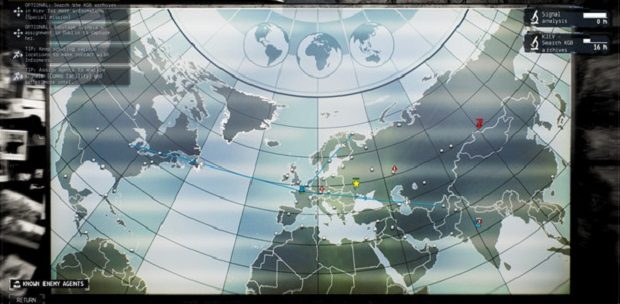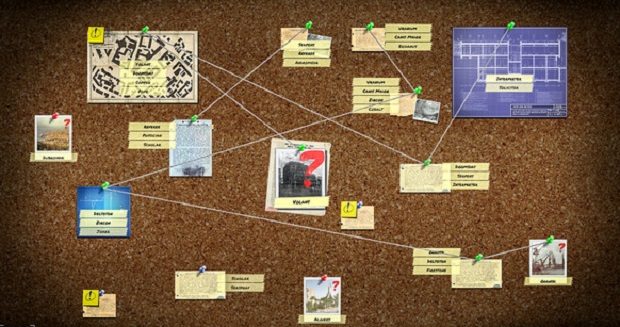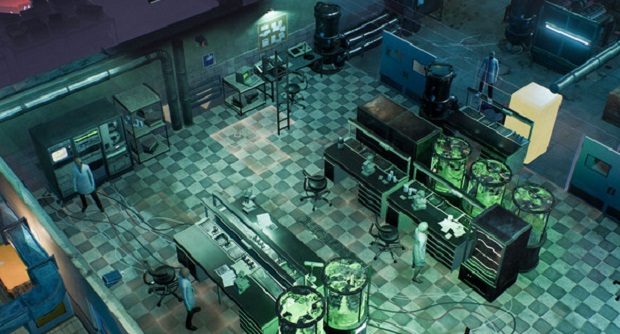XCOM-like tactical espionage thriller Phantom Doctrine was my Gamescom highlight
Make your own Manchurian Candidate
At first glance, Phantom Doctrine [Steam page] looks an awful lot like a Cold War flavoured XCOM. That's quite an exciting prospect and the closer I looked, the more exciting it became. There are agents instead of aliens, and some novel infiltration and reconnaissance systems, but everything from the UI to the cover system is immediately familiar. The tactical missions are hiding unexpected twists though, and zooming out to the campaign map shows that the setting informs every aspect of the game.
It's early days, and there's a lot of work to be done, but Phantom Doctrine might well be one of 2018's strategy highlights.
XCOM is the first reference point that comes to mind but many others follow, prime among them Covert Action, an early Sid Meier game that tackled a similar setting. Phantom Doctrine divides your time between a world map, where strategic decisions and team-building take place, and hand-crafted tactical environments where missions play out. Both layers have plenty of qualities and rules that make them more than Cold War reskins of existing games, but rather than digging into every feature, I'm going to focus on the ones that really stand out.
Let's start with the strategic map. You're the head of an agency caught in the middle of a big ol' conspiracy. You'll always be outnumbered and outgunned so you'll need to use intelligence to improve the odds. That's intelligence in both the espionage sense and the actual brain-thinking sense. You need the latter, in varying degrees, whenever you pick up a strategy game, but the former is rarely used.
In Phantom Doctrine, enemy agents and cells move around the world map and one of your main objectives is to figure out where they're going and what they're planning to do when they get there. To this end, you can spend a sort of intelligence currency, gained during missions, to do clever things like planting tracking devices on captured agents.
Let them back out into the wild and you can follow them back to their HQ and from there you can observe that HQ and prepare for an assault. Or maybe you'll infiltrate by planting one of your agents on the inside as an employee, undercover. Then, when you trigger a mission in the location, you'll be able to control that insider and either have them silently assassinate their former co-workers and guards, or disable cameras and other security devices.
Or maybe you'll use a Manchurian drill on a captured agent. In that case, once they're released you can push a button at any time to take direct control of them. That degree of brainwashing is a costly affair but comes with obvious benefits; you could sabotage defenses during a mission by bodysnatching an opponent, or could flip the asset (INFO WAR EUPHEMISM AHOY) while it's on-site at an embassy or agency HQ, using it to gather information and to help plot an infiltration from the inside.
Tucked alongside the campaign map, where all of the mission and agent tracking takes place, there's a wall that you can pin all of your leads onto. It immediately reminded me of that one scene in It's Always Sunny in Philadelphia when Charlie is chasing conspiracies.
You'll have your own Pepe Silvia before long, and a whole bunch of other names and places. As you interrogate captives or find dossiers during missions, you'll get more info to pin to the wall, and as codenames and references appear, you can link them together until you have enough connections to discover a new location or person out in the world. That leads to new potential missions and other opportunities.
It's easy to see a satisfying core loop of intelligence gathering backed up by missions that are either stealth or combat focused, depending on your approach and the reality on the ground. I should make it clear, I haven't seen the campaign working in all its dynamic glory. All of the individual components are in place, but given the limited time available and the fact I was mainly meeting up to view a demo of a tactical mission, I didn't see agent movement and interactions.
But I did see body engineering and chemical enhancements - “think of Ivan Drago's training regime”- and those conspiracy boards, and agent training and recruitment, as well as the map at the centre of everything. It's an exciting prospect, a game packed with moving parts all tied beautifully to that cold war espionage theme.
The most solid part of the whole puzzle so far is the tactical combat though, and that's potentially the least interesting ingredient. At first it looks like an XCOM reskin, with a UI just about similar enough to trick my brain into looking for sectoids in the shadowy corners of the embassy our agency is raiding.
As the mission unfolds, unique elements become clear though and, again, they fit the theme perfectly. You can have agents off-map, for instance, working as snipers or spotters. That gives you better visibility or the ability to pick off enemies from afar. And maybe you do have somebody on the inside, standing by a photocopier and trying to look innocent. As your team sneak through the building, you can have Mr Xerox slip away from his colleagues to turn off all the security cameras.
The embassy guards won't see you coming, or leaving if everything goes to plan.
Or you can bring some hardware and shoot your way through. There's no RNG for firefights – you shoot, you generally wound or kill. Characters do have a composure rating that allows them to dodge shots provided there's enough distance between them and the target. They're not doing a Neo and literally bending their body between bullets – it's more a case of ducking behind cover for a moment – but the composure acts like an armour stat, draining as agents are targeted. Once it's gone, damage goes straight to the body and it doesn't take many bullets to drop a person for good. We are not made to absorb bullets like some sort of bullet sponge.
Worse than the terrifying mortality and fragility of your recruits is the fact that the enemy will almost certainly bring bigger guns to the fight than you can. A helicopter started launching rockets at our embassy crew, though they did manage to call in an escape vehicle and get out of harm's way.
I could write so much more about why Phantom Doctrine nestled into my brain so comfortably. It's from the team that made Hard West and it's a far more ambitious game, building on the tactical framework of its predecessor. The setting is less imaginative, but more appealing to me, and the game looks like an exquisite marriage of setting, mechanics and theme.
Three Days of the Condor and The Manchurian Candidate reimagined as components in a complex strrategy game. I didn't realise how much I wanted to play it until I saw that it existed and now, I'll be following its development as closely as anything else out there.




